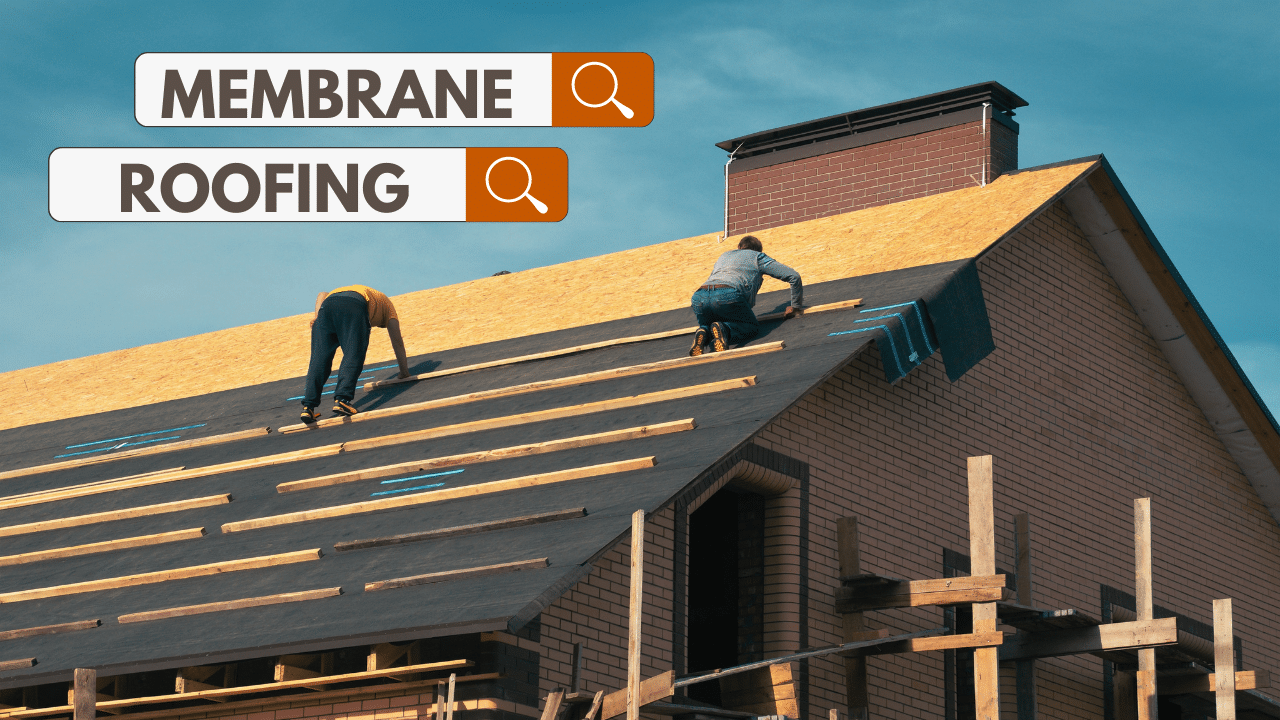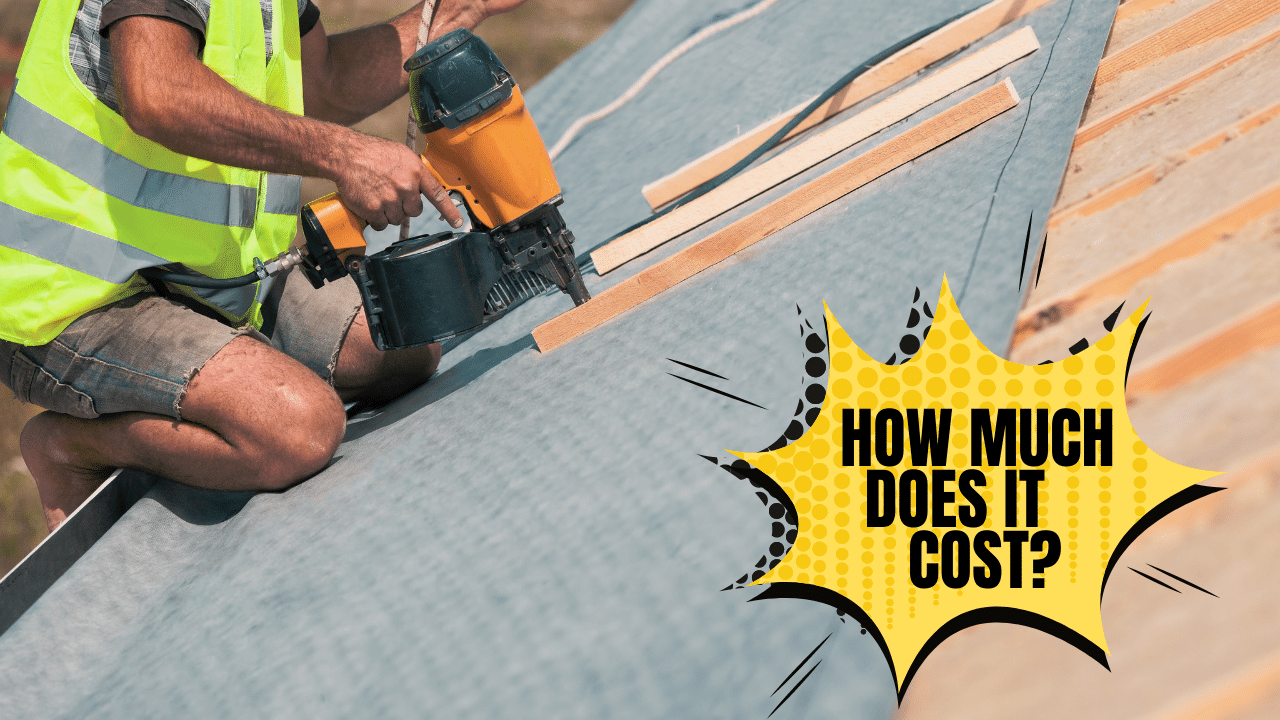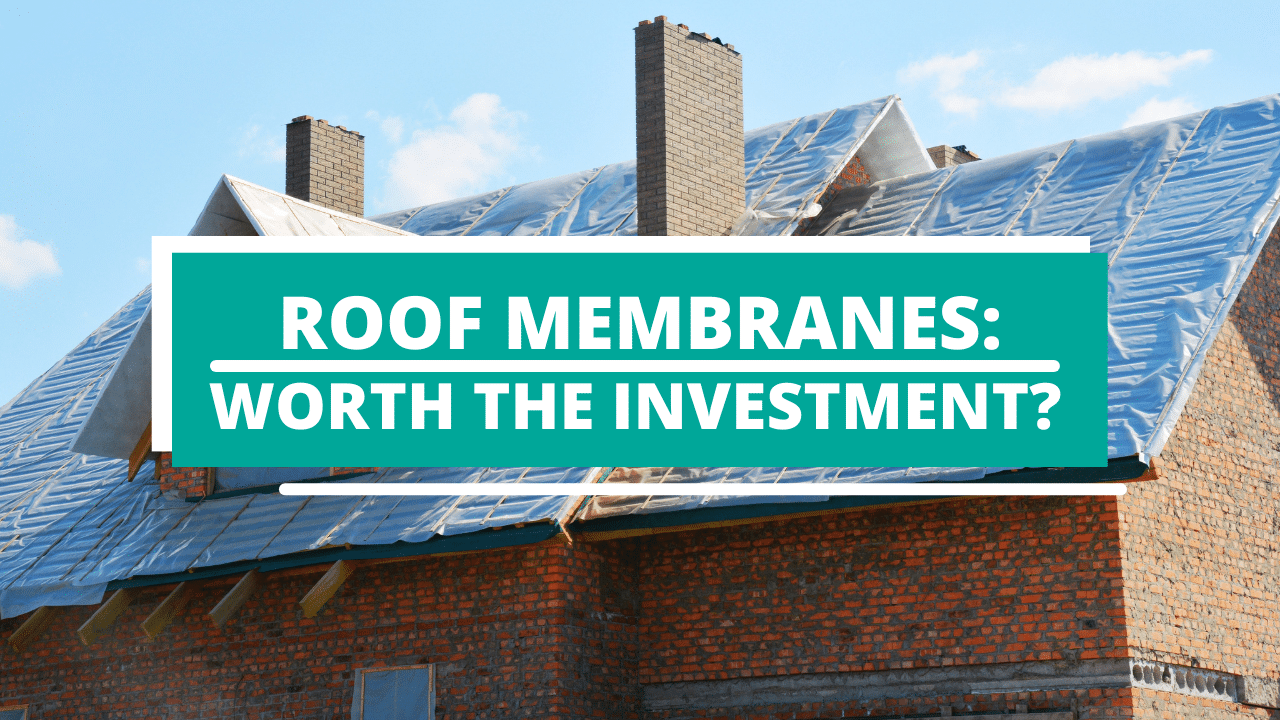A flooded roof is a serious issue for many homeowners across the country, especially during the rainy season. This all-too-real problem, however, is also a preventable one. And for many residential homes, investing in the proper installation of a membrane roofing system is not just helpful, but necessary.
What is a Membrane Roof?
A membrane roofing is a watertight covering devised to protect the interior of a structure from water leaks and damage. Although they are more commonly installed on the roofs of commercial buildings, roofing membranes are also used in residential homes with flat or low-sloped roofs where rainwater is not as easily drained into the gutters. If your house’s roof is built with a pitch of 3:12 or less, then you need this protective covering for your home.
Roof membranes are fabricated from various materials like synthetic rubber and thermoplastic and can either be single-ply or multi-layered. Regardless of what it is made from and how it should be installed, keep in mind that a membrane roofing has to be equipped with three key elements to do its job: waterproofing, durability, and surface protection.

Types of Membrane Roofing
There are three general types of membrane roofing that you can install to protect your roof from flooding and other destructive elements. Each roofing membrane has its own sets of pros and cons that you must carefully consider before you should shell out any money and hire a contractor to set it up for your home.
Thermoset Membranes
Thermoset roof membranes are a type of single-ply roofing system generally produced from synthetic rubber. The most common example of this is ethylene propylene diene monomer or EPDM. These black synthetic rubber membranes can be mechanically attached, fully adhered, or ballasted. They are manufactured “fully-cured” which means they can no longer be reshaped or resealed during installation. Their seams can be only be fastened using liquid adhesives or specialized tapes. Thermoset membranes are also quite thick – typically available in 30 to 60 mil thickness.
Thermoplastic Membranes
Thermoplastic membrane roofing is another type of single-ply roof membrane commonly made from either polyvinyl chloride (PVC) or thermoplastic polyolefin (TPO). Aside from the compounds they are produced from, thermoplastic membranes differ from thermoset membranes when it comes to how they are seamed together. PVC and TPO sheets can be reshaped and sealed by heat-welding using hot air, or chemically with solvents. They are manufactured in a range of thickness between 40 mils and 100 mils, and they come in white to light gray colors.
Modified Bitumen Membranes
Modified bitumen membrane roofing is a hybrid of synthetic rubber roof membranes and asphalt-based roofing. It is a multi-layered roofing system made up of a base sheet and surface sheet. For three-ply membranes, a reinforced ply is also placed in between the base and surface sheets. The bitumen, which is the same black and thick compound used to make asphalt, is modified with the addition of polyester materials. This creates a thin, flexible, and durable material that also ensures watertightness.

How Much Would It Cost?
The cost to undertake the installation of a roof membrane for low-slope or flat-roof residential housing depends on multiple considerations. These include the size of the roof, the membrane roofing system to be installed, and the materials used to create the membrane and its insulation. Small-scale projects also tend to have a higher cost per square foot as opposed to larger roofing projects.
But really, the best advice that any professional in this industry can give any homeowner is to find the right contractor for the job. Reputable contractors usually offer roof inspections before they give a written estimate at no cost and free of obligation. Providing a long-term warranty for any roofing system they install for their clients is also a great sign of their confidence in the quality of their workmanship. (Related: Costs Of A Roof Installation And Replacement In 2021)

